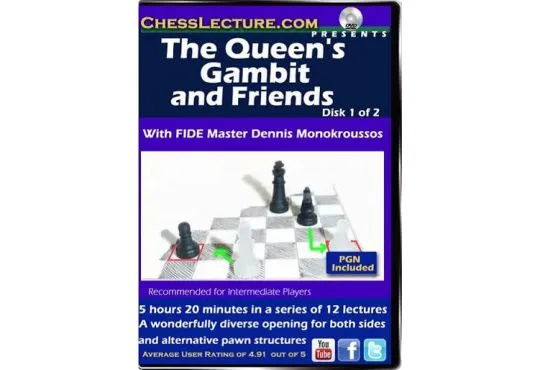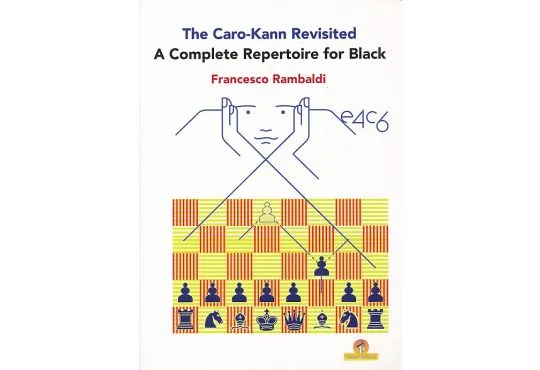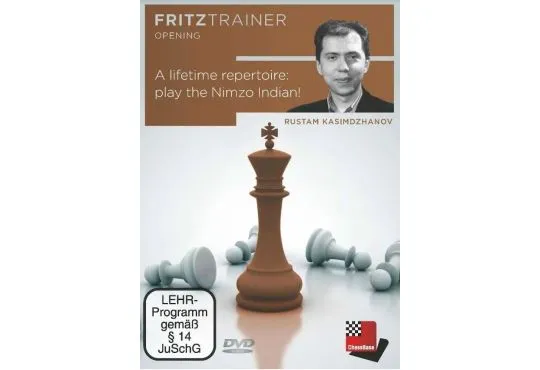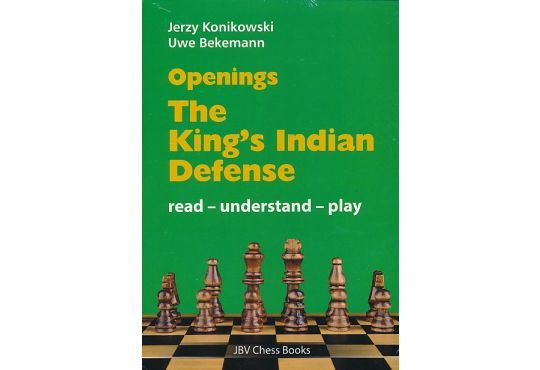The 10 Most Important Modern Chess Openings
Chess opening theory is constantly evolving. Certain openings gain in popularity while others fall out of favor. Modern chess opening theory never stays static!
This article explores the chess openings which are most important to know today, for the modern chess player. Learning these openings will broaden your understanding and deepen your appreciation for chess!
Table of contents
The Ruy Lopez
The Ruy Lopez begins 1. e4 e5, 2. Nf3 Nc6, 3. Bb5. It is named after a Spanish priest from the 1500s, making this opening nearly as old as the chess played under modern rules.
The Ruy Lopez has maintained its popularity for all these centuries because of its enduring strength. White may capture the Black knight on c6 in order to exert greater control over the center. Alternatively, White can reroute their light-squared bishop via a4 to b3 or c2 to point at Black’s kingside. White may also strike in the center with the d4 advance at some point.
Black also has plenty of ideas in the Ruy Lopez. One of the most important plans for Black is queenside expansion via …a6 and …b5. Depending on White’s play, Black may also be able to gain the bishop pair by targeting White’s light-squared bishop early in the game.
All in all, the Ruy Lopez gives both sides plenty to play for. It leads to complex and multifaceted middlegames. As such, it is one of the most important modern chess openings.
Related: Up Your Game With The Ruy Lopez Opening.
The Italian Game
The Italian Game begins 1. e4 e5, 2. Nf3 Nc6, 3. Bc4. From c4, White’s light-squared bishop commands a beautiful diagonal.
The Italian Game is another ancient chess opening. It features in a book of Pedro Damiano’s which was published all the way back in 1512 and has been popular ever since. The strong, simple opening moves of the Italian Game have stood the test of time.
The Italian Game is one of the best chess openings for beginners. It closely follows opening fundamentals and is very easy to understand. White prioritizes rapid piece development and looks to quickly castle their king.
The Italian Game is also frequently seen in the games of elite grandmasters. White’s light-squared bishop points at Black’s naturally vulnerable f7 square. White’s bishop also prevents Black from striking at the center with …d5 for the time being.
Games beginning with the Italian can become either tactical or positional. It is an excellent modern chess opening, suited to players of all levels.
The Sicilian Defense
The Sicilian Defense begins 1. e4 c5. It is Black’s most popular reply to the King’s Pawn Opening, and is also the most combative. The Sicilian is considered by many to be the greatest test of 1. e4.
One of Black’s ideas behind placing their pawn on c5 is to discourage White from playing d4 immediately. White may play d4 anyway, but usually feels the need to prepare it first - for example via 2. Nf3 (The Open Sicilian). In the Open Sicilian, the Black c-pawn gets traded for the White d-pawn after 3. d4 cxd4, 4. Nxd4. This introduces an immediate pawn structure imbalance between the two players with long-lasting repercussions.
Besides the Open Sicilian, White has many alternative ways to play against 1. …c5:
- The Alapin Variation, with 2. c3, in order to eventually play d4 with a pawn in support.
- The Closed Sicilian, with 2. Nc3 and a kingside fianchetto.
- The Smith-Morra Gambit, a pawn sacrifice beginning with 2. d4 followed by 3. c3.
- The Grand Prix Attack, an aggressive setup involving Nc3 and f4.
Each of these systems have their own body of opening theory. The Sicilian Defense is one of the most theoretically challenging modern chess openings, but also one of the most rewarding for those who are prepared to take on the challenge.
Related: The Sicilian Defense - Great For All Levels.
French Defense
The French Defense begins 1. e4 e6. Black’s idea is to use the e-pawn to support the …d5 advance, usually on the next move.
The French Defense was named after a correspondence game played between the Paris and London chess clubs in 1834. The Parisian club, playing with the Black pieces, started the game with 1. …e6 and went on to win the game. At the time, 1. …e6 was rather unusual, and people began referring to the move as the “French Defense”. It has been called that ever since.
Today, the French Defense has a solid reputation among modern chess openings. Black will eventually strike at White’s center with the …c5 pawn break and will look to play on the queenside. Black’s prospects generally improve as more pieces leave the board. The French Defense is therefore well-suited to those who thrive in the endgame.
Meanwhile, White’s ambitions usually lie on the kingside. White may be able to pull off the Greek Gift sacrifice with Bxh7+ if Black decides to castle short. Even if the Greek Gift does not work, White still often attempts to mount an attack against the Black king in the French Defense.
Another strategy for White can be to play against Black’s perennially bad light-squared bishop. It is well-known that the light-squared bishop is Black’s worst minor piece in the French Defense, as it often ends up unable to develop to an active square due to Black’s own pawn on e6.
Caro-Kann Defense
The Caro-Kann begins 1. e4 c6. Similar to the French Defense, Black intends to play …d5 next, supported by a pawn.
Using the c-pawn (instead of the e-pawn, as is the case in the French Defense) to support the …d5 advance has pros and cons for Black.
- The main advantage of the Caro-Kann is that Black can develop their light-squared bishop outside of their pawn chain before playing …e6. This is in contrast to the French Defense where, due to playing 1. …e6, Black’s light-squared bishop finds it difficult to get into the game.
- On the downside, when Black wants to play …c5 later in the game, this pawn break will have cost Black an extra tempo in the Caro-Kann as compared to the French Defense, because the Caro-Kann requires the c-pawn to move twice to go from c7 -> c6 -> c5. In the French Defense, the c-pawn goes from c7 -> c5 in a single move.
The Caro-Kann is a favorite modern chess opening among positional players. Black gains a solid pawn structure and can look to play a long-term, strategic game.
Related: Crush White With The Caro-Kann Defense.
The Queen’s Gambit
The Queen’s Gambit begins 1. d4 d5, 2. c4. White invites Black to capture their undefended c-pawn, with the idea that if Black accepts the offer, White will be able to take over the center via a quick e4 pawn advance, given that capturing 2. …dxc4 deflects the Black d-pawn away from influencing the e4 square.
It is worth noting that White is almost always able to quickly regain their sacrificed pawn in case Black decides to capture 2. …dxc4 in the Queen’s Gambit. For example, once White plays their e-pawn forward, White can look to capture Black’s “extra” pawn via Bxc4.
-
 CLEARANCE - Crushing White - The French Defense - EMPIRE CHESSSpecial Price $11.98 Regular Price $29.95
CLEARANCE - Crushing White - The French Defense - EMPIRE CHESSSpecial Price $11.98 Regular Price $29.95 -
 The Queen's Gambit and Friends - 2 DVDs - Chess Lecture - Volume 95 By FM Dennis Monokroussos$49.95
The Queen's Gambit and Friends - 2 DVDs - Chess Lecture - Volume 95 By FM Dennis Monokroussos$49.95
The Queen’s Gambit is White’s most popular continuation in the Symmetrical Queen’s Pawn Opening. It promises a rich strategic battle for both sides and is one of the most important modern chess openings.
Black has several ways of meeting the Queen’s Gambit. The most popular are:
- The Queen’s Gambit Accepted - with 2. …dxc4, imbalancing the pawn structure.
- The Queen’s Gambit Declined - where Black supports their d-pawn via 2. …e6.
- The Slav Defense - another way for Black to defend their d-pawn, with 2. …c6.
- The Chigorin Defense - where Black develops a piece via 2. …Nc6.
Related: The Queen’s Gambit - A Great All Round Option For White.
London System
The London System is a Queen’s Pawn Opening characterized by White developing their dark-squared bishop early in the game. For example, 1. d4 d5, 2. Bf4.
By getting their dark-squared bishop off its starting square early, White gets to play e3 with their bishop in front of the pawn chain. In the Main Line of the London System, White’s next moves will typically be Nf3, e3, c3, Bd3, Nbd2 and 0-0. White’s central pawn “triangle” of c3, d4 and e3 is very difficult for Black to break down.
One of the great attractions of the London System is that White’s first few moves can be the same against almost any setup Black goes for. For this reason, the London System is an extremely popular modern chess opening for beginners. It is also a mainstay among more advanced chess players who wish to eschew learning a great deal of opening theory.
The Grünfeld Defense
The Grünfeld Defense begins 1. d4 Nf6, 2. c4 g6, 3. Nc3 d5. In this hypermodern chess opening, Black invites White to gain a large presence in the center. Black then plans to undermine White’s center with attacks from the flanks.
White can gain a mass of central pawns in the critical Exchange Variation: 4. cxd5 Nxd5, 5. e4 Nxc3, 6. bxc3. At first glance, White seems to have a very attractive center with pawns on c3, d4, and e4. However, the reality is more complex. Black will soon look to chip away at White’s center with moves such as …c5 and …Nc6, combined with Black’s powerful dark-squared bishop exerting pressure on the long diagonal once …Bg7 is played.
White has other ways of playing against the Grünfeld Defense. However, they have one thing in common: the Grünfeld Defense is theoretically sharp for both sides. A single opening inaccuracy can quickly lead to an unplayable position.
Related: Strike At The Queen’s Pawn Opening With The Grünfeld Defense.
King’s Indian Defense
The King’s Indian Defense begins 1. d4 Nf6, 2. c4 g6 and continues with Black playing a pawn to d6 (instead of to d5, as is the case in the Grünfeld Defense). For example, 3. Nc3 Bg7, 4. e4 d6 is a typical way for Black to enter into the King’s Indian Defense. Black’s pawn on d6 can support Black’s ability to fight for the center via …c5 or …e5.
Like its cousin, the Grünfeld Defense, the King’s Indian Defense is very theoretically demanding. Whichever player has memorized more opening theory will enjoy a large practical advantage over their opponent.
Should White decide to castle kingside, Black will look to launch an aggressive kingside attack beginning with the thematic …f5 pawn break. In such positions, White must try to break through on the queenside before Black’s kingside advances can land a decisive blow.
-
 Winning With the Modern London System A Complete Opening Repertoire for White Against 1. d4 d5$27.50
Winning With the Modern London System A Complete Opening Repertoire for White Against 1. d4 d5$27.50
However, White has other ways of playing against the King’s Indian Defense which involve castling queenside or not castling at all. These setups will instead see White be the one to launch a kingside pawn storm towards Black’s castled king.
King’s Indian Defense games tend to be extremely double-edged. It is a modern chess opening for players who favor sharp, hand-to-hand combat from very early in the game.
The Nimzo-Indian Defense
The Nimzo-Indian Defense begins 1. d4 Nf6, 2. c4 e6, 3. Nc3 Bb4. Black pins White’s queenside knight, thus preventing White from playing a pawn to e4 immediately. In some variations, Black can be willing to trade their dark-squared bishop for this knight in order to damage White’s pawn structure.
The Nimzo-Indian Defense is favored by positional chess players at all levels. The imbalances introduced by Black’s possible …Bxc3 capture results in interesting and varied middlegames. White’s bishop pair can be a strong asset, particularly on the dark squares. However, the loss White’s knight can mean Black can look to dominate the important e4 square.
The Nimzo-Indian remains one of the best-performing openings for Black, which helps explain why it has retained its status as an important modern chess opening.
Summary And Next Steps
Learning the modern chess openings can be a daunting task. The most important openings have naturally been studied more, and consequently have a greater amount of opening theory attached to them than the less important openings.
Therefore, we have a few final recommendations for you to help you along the way:
- Before picking an opening to add to your repertoire, consider your playing style. Think about the types of games you most enjoy, whether that be open or closed positions, aggressive or quiet, and your appetite for opening memorization. Different openings lead to different middlegames, and your repertoire should reflect your preferences as a chess player.
- Consider engaging the services of a chess coach. A chess coach can be extremely valuable when learning a new opening. Their experience can help you understand the opening at a deeper level, beyond memorizing the moves. Before committing to work with a coach, ask about their experience with the opening you are planning to learn. Click here to read more about finding the right chess coach for you.
- Learn one opening at a time. Unless you have a great deal of time on your hands, it will be too overwhelming to attempt to learn every chess opening on this list at once. Select one opening to focus on, and then invest in an opening book to guide you. Check out our extensive range of chess opening books here.
Frequently Asked Questions
The Ruy Lopez and Queen’s Gambit perform very well for White at master level. Meanwhile, the Sicilian Defense and Nimzo-Indian Defense score strongly for Black.
White’s most popular first move is 1. e4, the King’s Pawn Opening. From there, Black’s two most common replies are 1. …c5 (the Sicilian Defense) and 1. …e5 (the Symmetrical King’s Pawn Opening). The second-most popular first move for White is 1. d4 (the Queen’s Pawn Opening), after which Black’s most common responses are 1. …Nf6 (the Indian Game) and 1. …d5 (the Symmetrical Queen’s Pawn Opening).
The “hypermodern openings” refer to a number of chess openings developed in the early decades of the 20th century characterized by controlling the center of the chessboard from the flanks, rather than occupying it with pawns. Hypermodern openings include the Réti Opening, Nimzo-Indian Defense, King’s Indian Defense, Queen’s Indian Defense, Grünfeld Defense, Alekhine’s Defense, Catalan Opening, and the Modern Defense.







